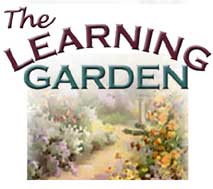
From Seed to Seed:
Plant Science for K-8 Educators
 |
From Seed to Seed: |
|
|
Response to Physical Contact  But consider the tendrils of your pea plants twining around their string supports. Or your morning glories, winding around their trellis. These are examples of plants responding to touch. How else would they know when and where to begin winding?
|
||||
|
Made possible by a grant from Oracle Corp. Copyright 2001, National Gardening
Association, Inc. For questions regarding this web site, contact Webmaster |